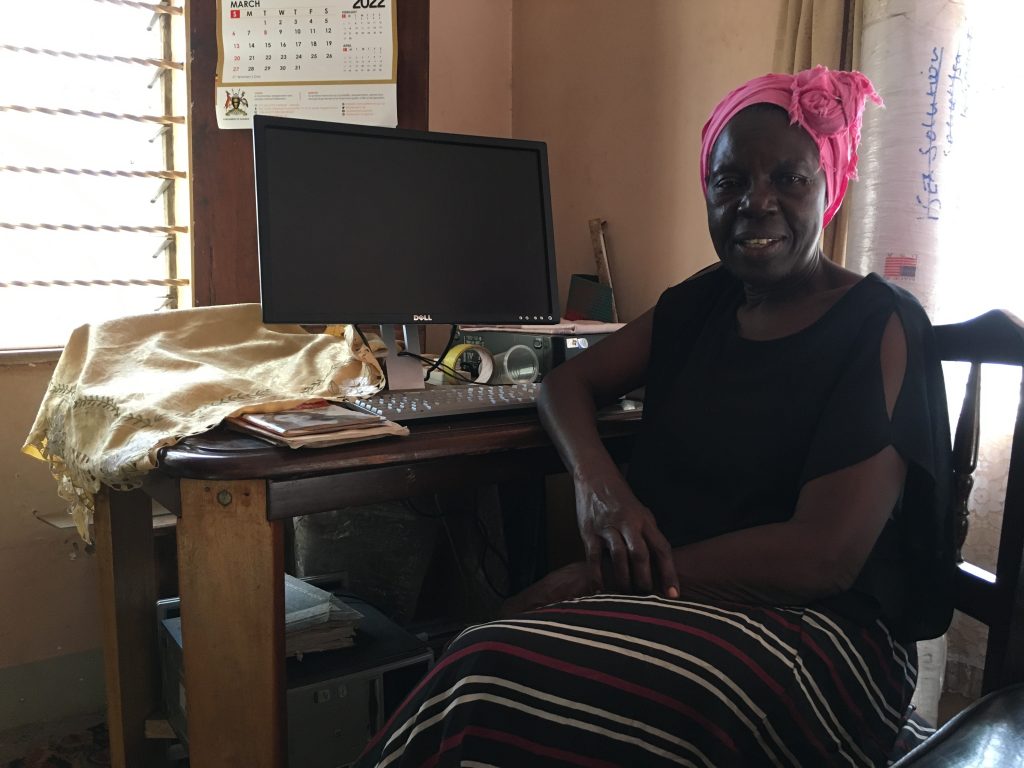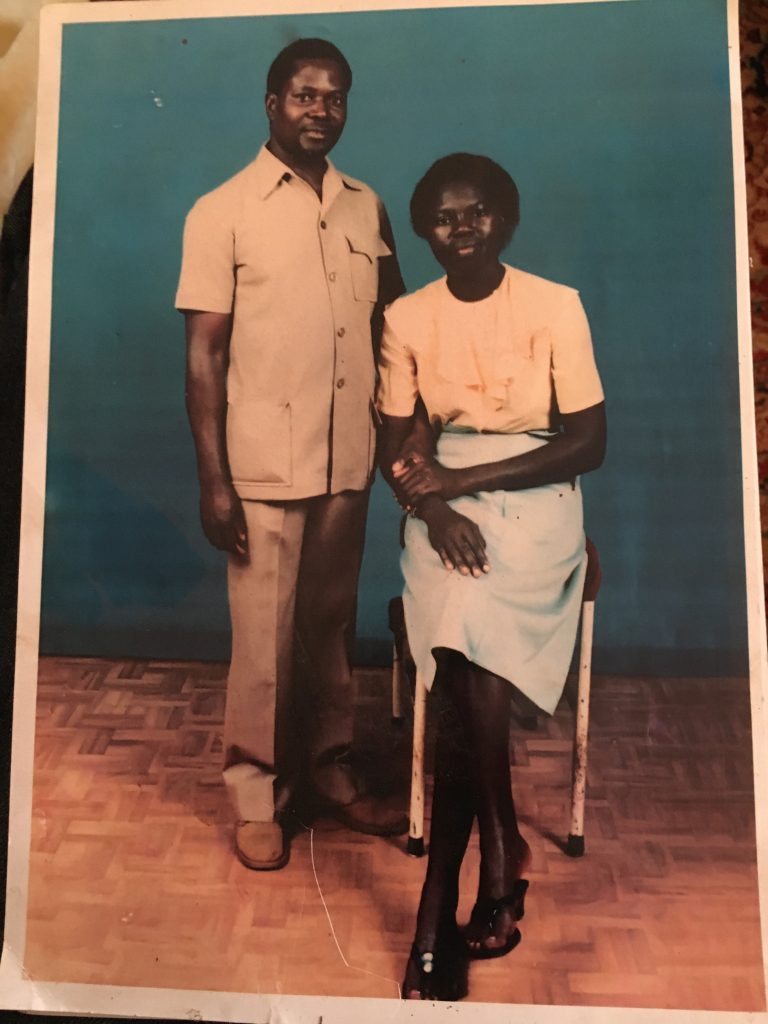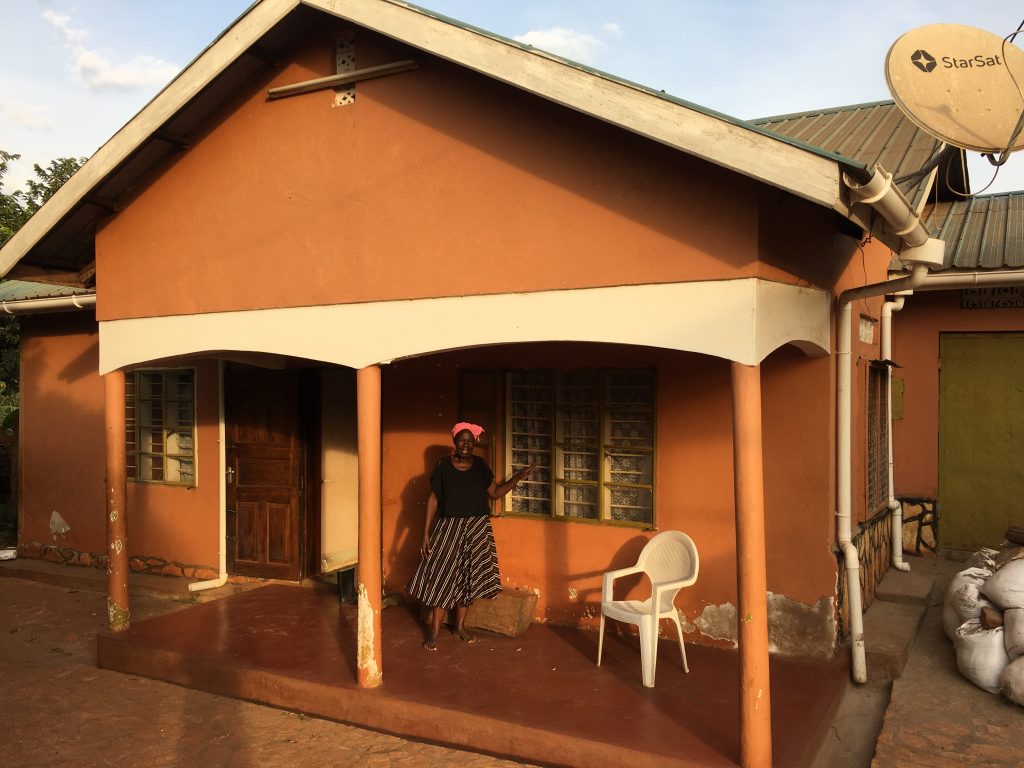
Margaret Nanteza Kagombe was born in the 1950s to Mr. Sepia and Mrs. Eve Kagombe. She had three older brothers. Her parents separated when she was only one month old and despite her mother’s attempt to kidnap her twice as an infant, she was raised with her father. She spent some time living with her grandmother on her father’s property but her grandmother left due to conflict with the new step-mother.
Margaret attended primary school at a Kalinabiri Primary school then later attended secondary school in Kololo Secondary School and East High school. Margaret almost left school one day when she was shamed by her teacher in class. One day, Margaret walked into class and the teacher realized that she had dirt on her neck. She was taken in front of the class along with another boy who was also in a similar state and was forced to run around the soccer field twice. All this was done while other kids looked and laughed. Afterwards, the teacher got these two and washed them clean. Margaret felt embarrassed, so she went and told her brothers about what happened and their response was incredible. They started to wash Margaret and her clothes every day they were home. Margaret still feels very proud of them.
Margaret lived in a mud hut on her father’s property as she was not allowed to live in the main house. She used to stuff the holes in the wall with blankets and place jerry cans in front of the door to keep it shut. When she was 14 and in S2, her brother’s friend managed to push the door open and raped Margaret. No-one had taught her about her body so she didn’t know what was happening when she had started her period and after being raped, she did not know that she was pregnant. When she started to present symptoms of pregnancy like eating dirt (one of the prominent cravings of most pregnant women here) and morning sickness, her stepmother noticed and told her father.
Her father told her to go and live with her mother who was a midwife so Margaret was taken to live with her mother who was now a stranger to her. Eve had already had other children and she had a job too so Margaret failed to get her footing in her new home.
Margaret fell sick and had to be taken to hospital but her mother only dropped her at the hospital and left her there. Eventually, her father came and took care of her. When Margaret thinks of the situation, she recalls that she must have had pneumonia. At this time, Margaret was very pregnant but it was taboo for a father to live with a pregnant daughter in the same house so she returned to live alone in the mud hut.
One day, Margaret started feeling a lot of back pain but being a child, she didn’t realize it was about time to give birth. The stepbrothers saw Margaret crying so they ran back and told their mother who eventually called Margaret’s father. He ran to one of his Muzungu neighbours who had a car and quickly drove off to the hospital. They reached the hospital but Margaret and the baby were already tired. The baby was so weak that he didn’t make a sound when he was born. The doctors quickly rushed the baby to another room and for about 3 weeks, they would come to wash Margaret and take milk from her.
She was later discharged from the hospital but her father was not there at the time. He had left instructions to the medics to get her a taxi back home. When she reached her father’s compound, her father came out of the house with money and asked the taxi driver not to leave but rather wait and take Margaret to the bus park. The driver was in shock because Margaret had been only discharged in the morning but there was nothing he could do. The taxi driver was a good man and he didn’t leave the bus park until Margaret was safe on the bus for “Kiboga” where her mother lived.
Margaret lived with her mother for another 8 months and then her father sent for her to return in order to go to school. He was adamant that the baby was not welcome but her mother would not care for the baby either. Eventually her aunty, who was very poor but who had shown the baby a lot of love, offered to continue to care for the baby. Margaret had no choice but to leave him with her.
On arriving back in Kampala, Margaret was taken back to her mud hut. Margaret remembered a snake that used to live in this house. Every morning, it would crawl in the cracks of the wall across the room, go outside and feed but every evening, it would come back through the same way and back to its hole. She first saw this snake as small as a charger cord but it grew up to the size of an adult’s thumb. It never did harm her at any point. It was like this snake was her guardian Angel; every night as it gave her company through the cold nights alone. She was not expecting to see it again of course but having lived with it for so long, it must have felt like family to her.
Margaret finished high school and went on to attend a nursing school in Gulu but was unable to finish due to the Idi Amin takeover wars. When the war broke out, all the girls in the school from Central Uganda were threatened by the girls from the North so Margaret fled and went to live with a friend at her friend’s brother’s house. For a long time, he housed, protected and fed Margaret and she felt like she needed to pay back for this man’s kindness so when he made advances, she would not turn him down. After the war, this man wanted to marry her but just before the war, Margaret had been in a relationship with another man so she returned home to him. When she returned though, she was pregnant, and the man she was dating before the war didn’t want anything to do with her so Margaret had her second baby boy alone.
She started looking for jobs to sustain her and eventually got a job at the post office where she met the man who later became her husband. Mr. Hasasha had just returned from England and was working in the stamps section. He was the man behind almost all the designs of the stamps until he retired. A few days before Christmas 1975, he requested some help from other departments and one of the people who helped was Margaret. Every day, Margaret came with breakfast snacks of roasted groundnuts and cassava fries that she would share. This caught the attention of this formidable young Ugandan man and he eventually asked to take Margaret for a date but Margaret at this point was tired of men. Hasasha remained friends with Margaret for two more years until she eventually agreed to date him. He married her 7 years later and he has remained a strong pillar of support in the work Margaret now does in her community.

She built a house on their property that looks exactly like the one she lived in opposite mud her father’s house. She said it carried a lot of meaning to her and time after time it reminded her of the humble background she had growing up. Her husband also built a house with a hall and shop for Margaret to do what she enjoys. He added extra rental rooms for her to generate income and support her projects. He wanted her to have a space to help the local women without her bringing them into their private home. She frequently has women staying there who have fled abusive situations and Mr. Hasasha wants to provide them security and privacy.

Margaret is known by her husband and children as the “one who picks up everything”. Margaret would pick stray cats, dogs, and anything that needed help. She told me a story of a young girl called Ritah who was only 14 years old when Margarets’ children found her rotting in a sugar cane plantation. They ran to Margaret and told her that since she picked up everything, this time she needed to pick up this human being. “We have seen a girl in the plantation,” they said. Margaret brought her home, boiled water and washed her as she had so many wounds all over her body.
Margaret fed Ritah and took care of her for weeks before asking her whether they could test her blood. She accepted and the result was as expected, Ritah was HIV+. She was later taken to the AIDS support organization but they couldn’t give her medication because she was still too weak.
It turned out that Ritah was being raped by her own father and he transferred the virus to her. Ritah decided to run away from home and started living with a group of girls in the community where Margaret was living. They would stay indoors during the day and moved out at night to go to clubs to be picked up by men so as to get food and money to sustain them. Eventually, Ritah got weaker and was not able to contribute to her group so the other girls had to kick her out. She started to live in the sugarcane plantation.
After several weeks with Margaret, Ritah was taken to school and learned catering by The AIDS Support Organization which also later bought her some catering supplies like food warmers and a rice cooker. However, because she had started a lifestyle that was not easy to get rid of, Ritah was drawn back into it and she got weak again.
Margaret’s firstborn became so invested in Ritah that he started to send her money and food when she moved out of Margaret’s house. She was allowed to come every week and pick food plus her allowances and go back to where she was living. It turns out that she was living with her brother in the house where she was abused because her dad had died at this point. Four years later, Ritah was to pick up her usual keep from Margaret but she did not come. The previous day, she had told Margaret that she was not feeling well and needed to make her way back to her house before it got dark. Margaret insisted that she stay with her given the condition she was in but Ritah refused. This was the last time Margaret heard from Ritah. She died and they were unable to reach Margaret at the time so they buried her close by her father’s house. This broke Margaret to the core and since then, she has sworn to do everything in her power to serve the girl child.

When Margaret first learned to make sanitary kits, it was intended for her to create an enterprise for herself but money was never her motivation. The people in her community are in absolute poverty, a place Margaret is familiar with. The women have to decide whether it’s school fees or meals, treatment or school or housing, whether this or that. Margaret decided to train these women as a way of empowering them to become self-sustaining and help their families to survive.
Margaret has worked with several Rotary Clubs in Uganda to do community outreaches on the islands of Lake Victoria and in and around most parts of Uganda to teach girls about reproductive health and to provide them with reusable sanitary pads. The deal in the past has always been that the Rotary Clubs would buy fabric and pay for the labour for the women sewers while Margaret did both the sexual health training and provided the PUL for the kits. Rotary recently awarded Margaret with a Certificate of Recognition for the work she does in these communities.

She has been at the worst places in her life and on several occasions during this interview, Margaret cried. It was incredible for me to see this great woman breakdown but yet again it explains why and how she became who she is now. Margaret in her own way has had her name written in the hearts of many of the people she has served. It is not easy for someone like this in our country to do something entirely voluntarily as Margaret has done and that is why I admire her. Of course, she has had help from many people but it took courage to step out and accept the support she required on her journey.
There is so much to share from my time Margaret but a story of 70 yrs long can not be told in less than a book. In the meantime I hope we can all enjoy this amazing story of Margaret Hasasha Kagombe.



